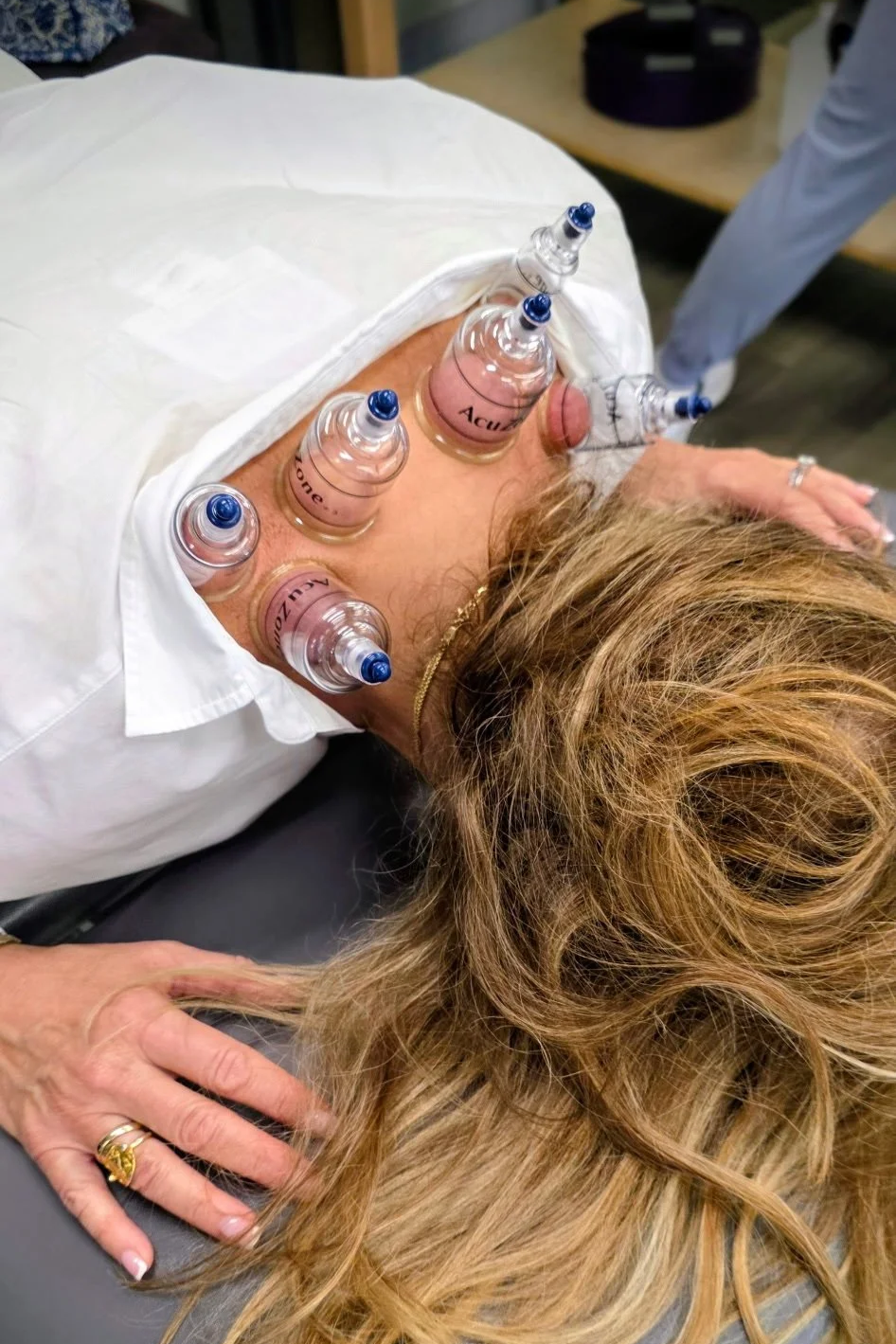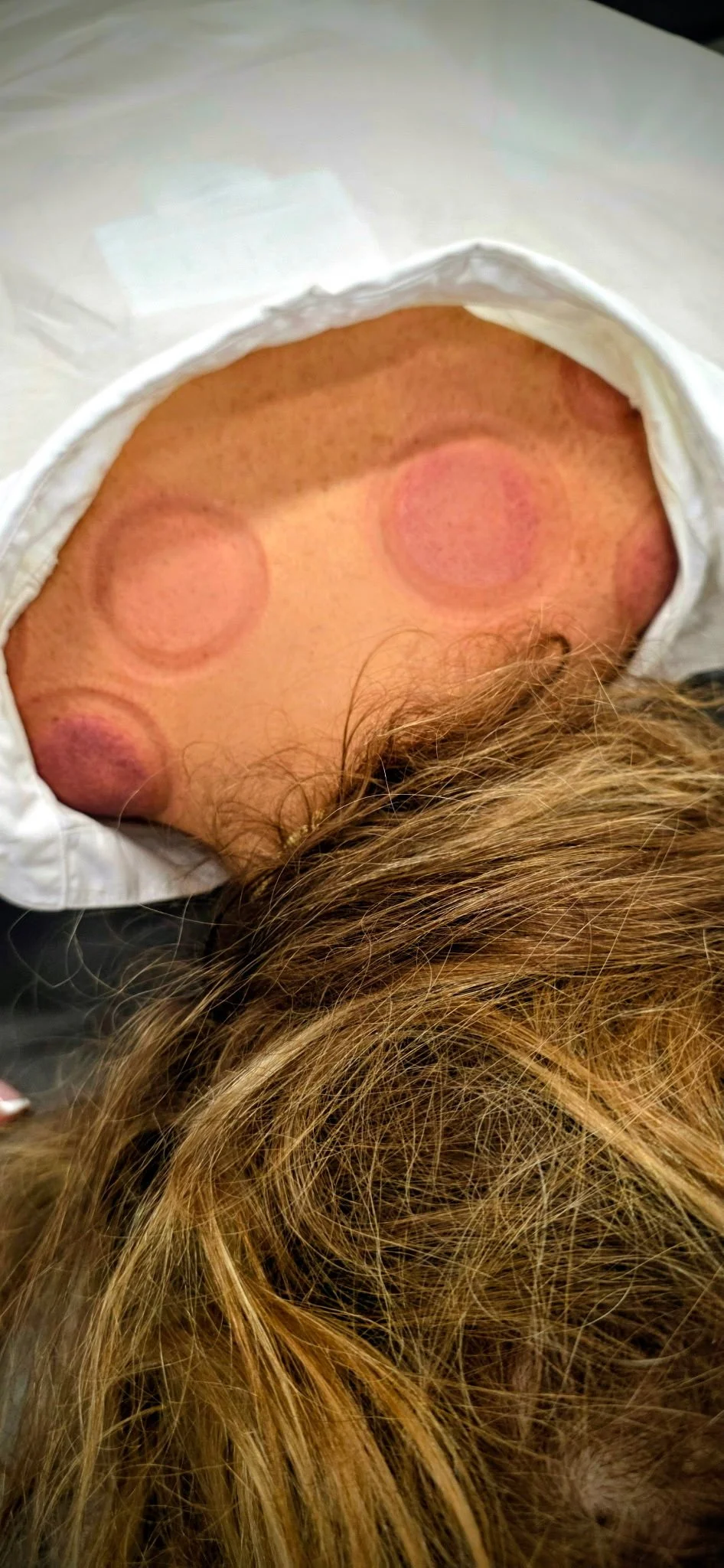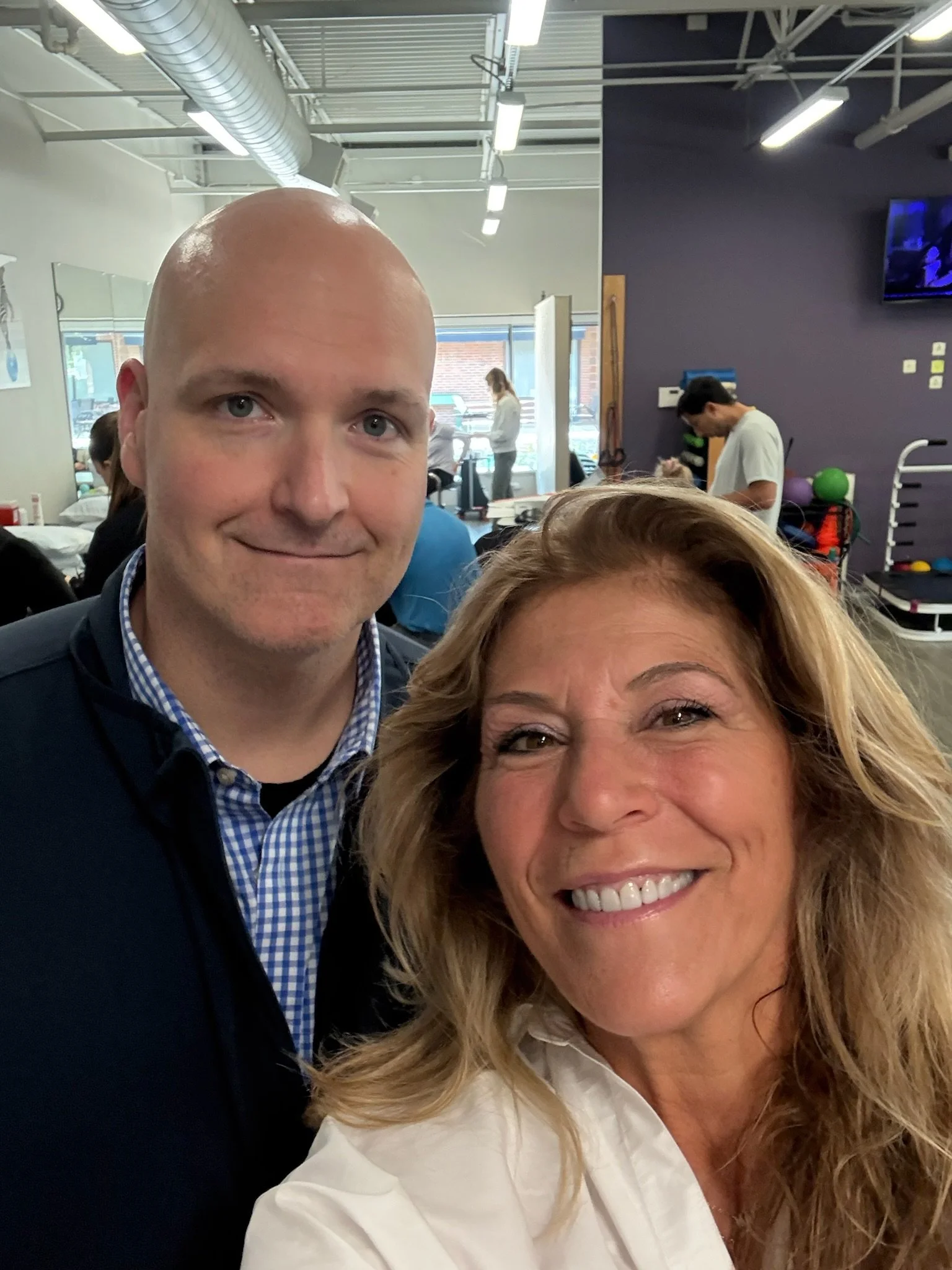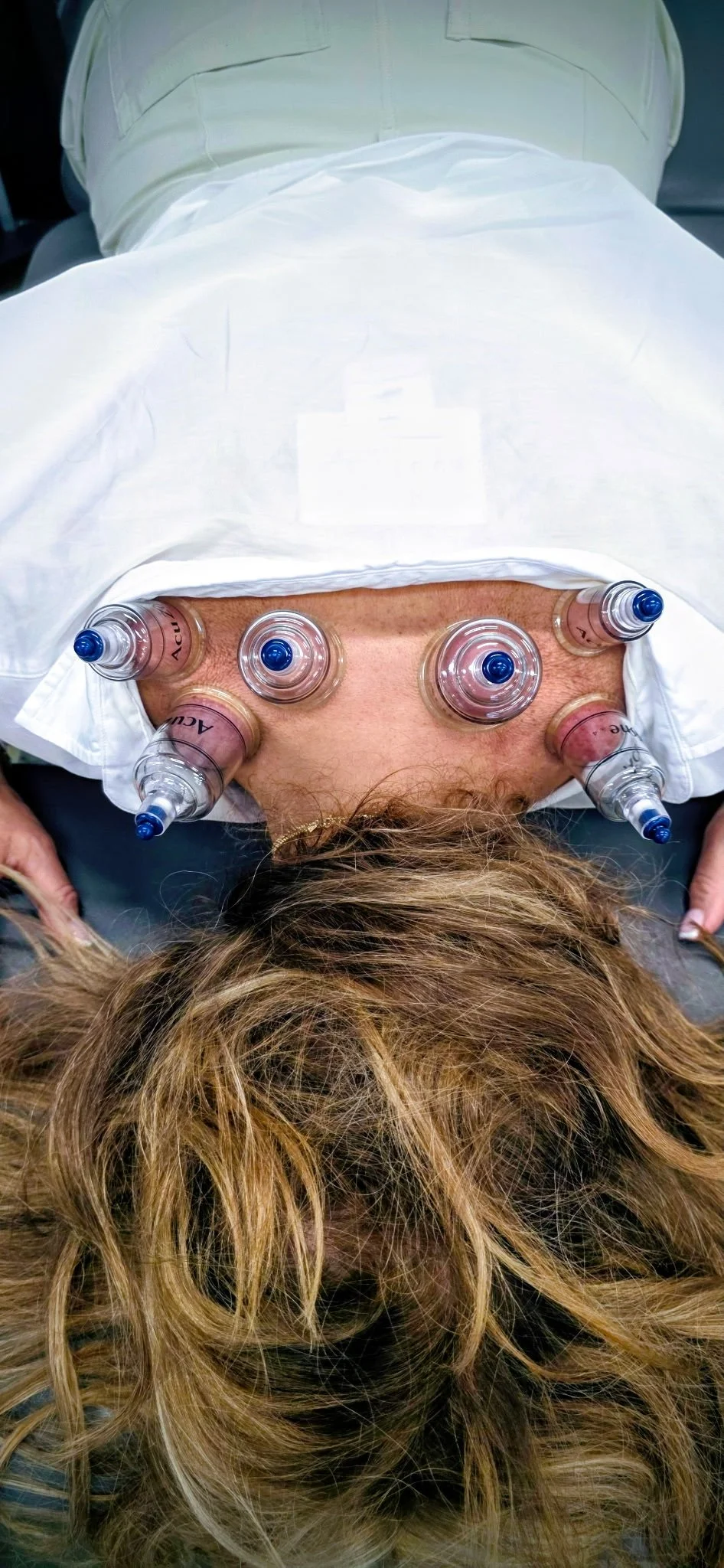Cupping: A Path To Renewal
Yiasas- great to be with you.
Today is about an Ah-HA moment.
A moment in time, decades ago when I recall my father being so sick with the flu, and my beloved mother giving my father ventouses- βεντνουζεσ or suction cups to help him feel better. At the time, it was weird to see my Manoula heat up teacups and place them all over my dad’s back. I don't remember the exact process of the cups adhering to my father’s back, but I do remember the practice being similar to the treatment I received last week at Impact Physical Therapy.
The art of cupping is a powerful wellness practice with roots in grounding our human existence through relieving pain.
Kefi Life Buzz for Longevity: Paths to Renewal Series is brought to you by InfuseWell Concierge spotlights THE ART OF CUPPING with Tim Rylander.
The following research is written by Tim.
Cupping: A Journey Through Time and Tissue
Tim Rylander, PT, EdD, MPT, OCS, CSMT, PES
The pursuit of healing has led humanity down countless paths, unearthing a diverse array of therapeutic practices. Among these, cupping therapy stands as a testament to ancient wisdom, a technique that has transcended millennia and continues to find relevance in modern musculoskeletal care. Often categorized under the broader umbrella of "negative pressure manual therapy," cupping utilizes suction to lift and decompress soft tissues, offering a unique approach to pain relief, improved circulation, and enhanced tissue recovery.
A Glimpse into the Past: The Historical Roots of Cupping
The origins of cupping therapy are deeply embedded in the annals of history, with evidence suggesting its use across diverse ancient civilizations.
Ancient Egypt: Hieroglyphs and medical papyri, such as the Ebers Papyrus (circa 1550 BCE), depict physicians utilizing cupping vessels for a variety of ailments, including fever, pain, and internal disorders.
Traditional Chinese Medicine (TCM): Cupping has been an integral part of TCM for thousands of years. Early texts describe its application to move qi (life force) and blood, dispel stagnation, and balance the body's energetic pathways. Animal horns were among the earliest tools, later replaced by bamboo and ceramic cups.
Ancient Greece: Hippocrates, the "Father of Medicine," advocated for cupping as a method to treat internal diseases and structural problems. He believed it could draw out "bad humors" and restore equilibrium.
Islamic and Middle Eastern Medicine: Cupping, known as hijama, was widely practiced in Islamic medicine and remains so today. It was often performed after bloodletting or as a standalone therapy for a multitude of conditions.
Throughout its long history, the fundamental principle remained the same: to create a vacuum that draws tissue upwards, but the materials evolved from animal horns and bamboo to glass, ceramic, and eventually, modern silicone and plastic cups.
The Science Behind the Suction: How Negative Pressure Works
At its core, negative pressure manual therapy, like cupping, operates on the principle of decompression. When a cup is applied to the skin and air is removed, it creates a vacuum that pulls the skin, superficial fascia, and underlying soft tissues into the cup. This action initiates a cascade of physiological responses:
Increased Blood Flow: The suction dilates blood vessels, leading to a localized increase in blood circulation. This brings fresh oxygen and nutrients to the area while facilitating the removal of metabolic waste products.
Lymphatic Drainage: The lifting action helps to open lymphatic vessels, promoting the drainage of excess fluid, toxins, and inflammatory mediators from the interstitial spaces.
Fascial Release: The negative pressure can lift and separate fascial layers that may have become adhered or restricted. This can improve tissue mobility and reduce tension.
Neurological Effects: Cupping can stimulate sensory nerves, potentially modulating pain signals and promoting relaxation. It may also activate the parasympathetic nervous system, leading to a calming effect.
Microtrauma and Healing Response: The superficial bruising often seen after cupping is a result of microtrauma to capillaries. This can trigger a localized inflammatory response, initiating a healing cascade that involves increased collagen production and tissue remodeling.
Clinical Applications in Orthopedic Care
In contemporary musculoskeletal therapy, cupping and negative pressure techniques are utilized by a variety of practitioners, including physical therapists. Its applications are broad and continually expanding, targeting a range of conditions and goals:
Pain Management
Cupping is often employed to alleviate both acute and chronic musculoskeletal pain. It can be effective for:
Back and Neck Pain: Reducing muscle tension, improving circulation, and releasing fascial restrictions in these commonly affected areas.
Shoulder Pain: Addressing issues like rotator cuff tendinopathy, frozen shoulder, and general stiffness.
Myofascial Pain Syndrome: Targeting trigger points and areas of localized muscle tightness.
Headaches: Applied to the neck and upper back to reduce tension contributing to headaches.
Fibromyalgia: Helping to reduce widespread pain and improve tissue compliance.
Enhancing Mobility and Flexibility
By decompressing tissues and releasing fascial adhesions, cupping can significantly improve range of motion and flexibility.
Post-Injury Rehabilitation: Assisting in the recovery from sprains, strains, and other soft tissue injuries by reducing swelling and promoting tissue regeneration.
Pre- and Post-Athletic Performance: Used by athletes to prepare muscles for activity by increasing blood flow and tissue elasticity, and post-activity to aid in recovery and reduce muscle soreness.
Scar Tissue Management: Helping to soften and remodel old scar tissue, improving its elasticity and reducing restrictions.
Relaxation and Stress Reduction
The physical sensation of cupping, combined with its effects on the nervous system, can promote a deep sense of relaxation.
Muscle Spasm and Tightness: Releasing chronic muscle guarding and tension often associated with stress.
General Well-being: Contributing to an overall sense of calm and reduced anxiety.
Types of Cupping Techniques
Modern practice incorporates various cupping methods, each with specific applications:
Dry Cupping: The most common form, where cups are placed on the skin and left stationary for a set period.
Dynamic/Moving Cupping: Oil or lotion is applied to the skin, and cups are glided across the body, creating a massage-like effect to release larger areas of fascia and muscle.
Flash Cupping: Cups are quickly applied and removed in rapid succession, often used for more sensitive areas or to create a pumping action.
Wet Cupping (Hijama): Involves making small superficial incisions on the skin before applying the cups to draw out a small amount of blood. This is a more specialized technique, often practiced within specific cultural and medical traditions, and requires strict sterile protocols.
Considerations and Contraindications
While generally safe when performed by a trained practitioner, cupping does have contraindications and potential side effects. It should be avoided on:
Open wounds, active skin infections, or severe dermatological conditions.
Areas with varicose veins, deep vein thrombosis (DVT), or severe peripheral artery disease.
Over superficial nerves or arteries.
During pregnancy (especially over the abdomen and lower back).
Individuals on blood thinners or with bleeding disorders.
Patients with severe heart conditions or a history of seizures. Temporary side effects may include circular marks (bruising), mild soreness, or blistering in rare cases if cups are left on for too long or suction is too strong.
Conclusion: Bridging Ancient Wisdom and Modern Care
Cupping and negative pressure manual therapy represent a fascinating convergence of ancient healing arts and modern physiological understanding. From the simple animal horns of antiquity to the sophisticated silicone cups of today, the core principle of decompressing and mobilizing tissues has remained constant. In the realm of musculoskeletal care, cupping offers a versatile, non-invasive tool that can effectively address pain, improve mobility, reduce inflammation, and promote overall well-being. As research continues to shed light on its mechanisms and benefits, cupping therapy is poised to continue its long journey, serving as a valuable adjunct in the holistic approach to health and healing.
I thank Tim for sharing his expertise on Cupping.
Learn more and be inspired when you listen to Kiki and Tim during this week’s episode 207 of Kefi Life the Podcast.
In the meantime, wishing you Ola kala-All is Well!
Filakia,
Kiki





